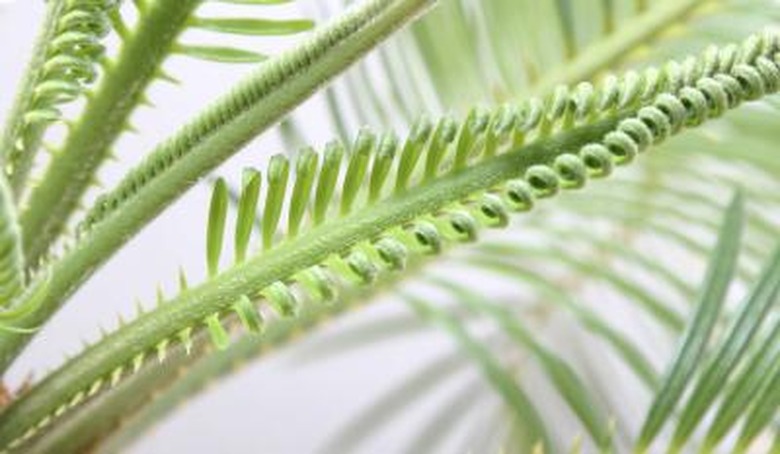Why Is My Sago Palm Turning Yellow?
We may receive a commission on purchases made from links.
The deep green leaves and majestic trunk of the sago palm (Cycas revoluta, USDA zones 9-12) make a beautiful and gracious addition indoors or out. A sago palm that begins to turn sickly yellow needs some attention before the entire plant begins to suffer.
Tip
A sago palm that begins to turn yellow is more than likely deficient in vital nutrients.
Sago Palm Basics
Sago Palm Basics
The thick, ribbed fronds that sprout from the trunk may make the versatile plant resemble a palm, but sago palms are actually in the cycad family (Cycadaceae) and unrelated to true palms. These hardy, cone-bearing plants are slow-growing and can last for generations once planted and properly cared for. They can grow from a petite 3-feet-tall to a towering 10 feet.
While they aren't technically palms, a sickly, yellow-tinged sago palm can be treated with the same fertilizers and techniques that you would use on palm trees.
Sago Palm and Soil
Sago Palm and Soil
The sago palm is favored for its ease of care. The plant grows best in rich, well-drained and slightly acidic soil. Look for a pH of 5.5 to 6.5. If the pH is too high or too low, this could mean the plant is in need of nutrients. Use a soil testing kit to determine the pH balance or take a soil sample to your local cooperative extension service. For a nominal fee, the extension staff will not only test the soil pH but will also determine any nutrient deficiencies or excesses in the soil. There are other ways to tell what the sago palm may be in need of to return it to its glossy green coloring.
Watering Sago Palms
Watering Sago Palms
These tropical plants need just the right amount of water and humidity. Watering too much will create yellow leaves — and so will underwatering. A good rule of thumb is to water the sago palm when the soil is dry to the touch near the base of the trunk.
Be consistent when watering to ensure the plant roots aren't drowning in water or too dry from lack of moisture. Give the rootball a good soak so the water reaches about 2 feet below the soil surface. If you aren't sure whether water is the issue, turn off the irrigation to the plant and adjust how much water it receives. If the plant is in need of water, the tips of the leaves may turn brown rather than yellow.
Sago palms grown indoors may need extra humidity to keep the leaves lush and glossy. Place a tray of water near the plant or spritz the leaves with water a few times a week.
Nutrients for Sago Palms
Nutrients for Sago Palms
When the sago leaves begin to show a yellow tinge, it may be due to a deficiency in the soil. The sago needs nitrogen, magnesium and potassium to keep its leaves bright and its trunk sturdy.
The sago palm may be deficient in nitrogen if the older leaves on the outer rim of the canopy are turning yellow. A magnesium deficiency will show up as yellow bands along the leaf, but will leave the central leaf a healthy shade of green. If the inner leaves of the palm look shriveled and/or yellow, this can also be due to a magnesium deficiency.
In the absence of a soil test, a general palm tree fertilizer applied to the base of the plant can add the needed nutrients. Fertilize only established sago palms that have had at least three months to adjust to the soil and space, and follow all label recommendations.
